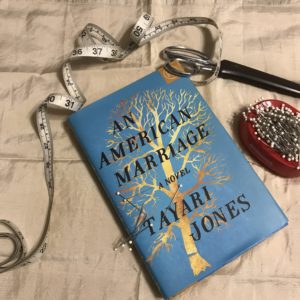 All around Roy were shards of a broken life, not merely a broken heart. Yet who could deny that I was the only one who could mend him, if he could be healed at all? Women’s work is never easy, never clean.
All around Roy were shards of a broken life, not merely a broken heart. Yet who could deny that I was the only one who could mend him, if he could be healed at all? Women’s work is never easy, never clean.
Synopsis
On the night Roy and Celestial decide to try for a baby, Roy is arrested and wrongly accused of a crime he didn’t commit. Roy and Celestial find themselves looking at a twelve-year sentence only eighteen months into their marriage. As Roy lives behind bars, life—and his marriage—moves on without him. When Roy finds himself suddenly released early, he sets off home to find out what, if anything, remains of his and Celestial’s marriage.
Characters
Jones did an excellent job introducing Roy and fleshing out his character. Of the three viewpoints in An American Marriage (Roy, Celestial, and their friend Andre), he was the only character I felt I really knew. Even the viewpoints of the other characters seemed mostly to serve to introduce Roy to the reader. When Andre visits Roy’s father to pick Roy up from prison, I didn’t learn anything in particular about Andre; rather, I saw Roy through his father’s eyes. Saw the sacrifices that allowed Roy Jr. to leave his small town, to try to become the man he wanted to be. I met Roy through the dialect of the people where he grew up in Louisiana, through Celestial and her family that adopts him in Atlanta.
I don’t feel the same about Celestial, though my sense that I don’t now her comes as a contrast to Roy since I felt he was so deeply introduced. Her chapters seemed to try to give an introduction to who Celestial was, particularly when interacting with her father and Roy’s and Andre’s chapters gave an outside view of her…but I was left feeling like I didn’t know Celestial nearly as well as I knew Roy, and I wanted to. The book doesn’t read as if it is about one main character, but rather that the Marriage and its participants are the focus. And yet, I was left hanging with Celestial—unconnected to her as a character, not engaged with her and the choices she was making. In some ways, it seemed Celestial didn’t truly know herself and her actions reflected this. However, if the point was that Celestial didn’t’ know herself, this made it awfully difficult to introduce her to a reader and to make a reader care for her. It was ultimately a lopsided marriage and while the writing may have been making this point, it didn’t feel like a deliberate choice not to round out Celestial. In some ways, I even felt like I knew Andre better than I knew Celestial and he was the most peripheral of the three characters.
Themes
Two related themes in An American Marriage struck me in particular and made this book both a good and a hard read. The first, admittedly obvious point, is that being an African American (particularly an African American man) in this country (particularly but not exclusively in the South) has inherent danger. No matter how far you have climbed, how upright and moral you are, the color of you skin alone places you in suspicion. When circumstances are right (or wrong), the color of your skin alone can land you in prison for a crime you didn’t commit. It’s easy to think that Roy’s story in An American Marriage is just a story, based around a plotline that is far-fetched. And yet, the wrongful convictions of four African-American and one Hispanic youth in the Central Park Jogger case and the wrongful conviction of African-American football player Brian Banks belie the idea that wrongful convictions of people of color still happen.
The second was a question about how far from your roots you can ever really grow. On the one hand, Celestial’s father was a chemistry teacher who discovered a synthetic substance that made the family millions when the patent was sold. He’s a black man who was able to raise himself up from what seemed to be lower-middle to middle-middle class in Atlanta to richy-rich, though he still chose to live on the black side of town. His choice to remain on the black side of town, having bought a mansion from a white family who was too nervous to continue to live there (it being a black neighborhood), raises questions about how far success can take a black family. They could have lived anywhere. But would they have been safe? You can see the Davenport choice to stay in the neighborhood as staying where they are comfortable. You can also see it as an example of staying safe—choosing to limit their success so that the family is successful in ways that stay palatable (re: largely unseen) to white Atlanta. Similarly, when Celestial gains a following making dolls as art, she’s Ebony famous. Her store is in an area where it is accessible to Black Atlantians with money but not in the Black part of town where whites would feel uncomfortable shopping.
Where the Davenports have had their success constrained by white senses of propriety, Roy’s life has the greatest constraints. Roy grew up poor in Louisiana. He went to Morehouse, got a job with upward mobility, and scrapped and hustled. He was on the come-up. Until he was Black at the wrong place in the wrong time and his Morehouse degree and cufflinks didn’t matter one whit to a mostly white jury in Louisiana.
The idea of this—that skin color alone can make you vulnerable, can cost you years of your life and health—is so abhorrent that we would rather pretend it isn’t possible than deal with the idea that this happens to people. And, as Roy’s and Celestial’s marriage shows, even if you’ve been freed, even if you’ve been set “right,” there is no getting back what that wrongful conviction took. Roy and Celestial can’t get those five years back—there were life events Roy missed in prison that he doesn’t get the chance to re-experience. The marriage suffers, with Roy in prison three times longer than they were married to start with. One of the wrongful convictions I mentioned earlier was of football player Brian Banks—before his false accusation, he was a rising football star. By the time he made it out of prison several years later and was exonerated, it was over five years later. He was signed to an NFL team but never made it off the practice squad.
While the reader is left with the question of what Roy might have been, there are real Roys—there are Brians, there are the Central Park Five—walking around, unable to get those five, six, ten years inside back.
And indeed, the life inside changes Roy, as it must inevitably change anyone who spends any amount of time there. My job affords me access to see prisoners in jail in their pods, so I have seen jail life closer up than most people have outside of watching Orange is the New Black. It is not any place I would want to spend any amount of time. And yet, I’m not going to pretend that I have any idea what five years in actual prison must be like. Roy leaves with physical scars (as does Celestial, a remnant of police treatment during Roy’s arrest) as well as psychological ones—the result of becoming responsible for something inside that he didn’t understand until it was too late.
In this way, the damage done to Roy and Celestial’s marriage feels almost inevitable. Marriage changes you, but in theory its changing both of you in ways that mean you can grow and change together. Roy’s incarceration changes Roy and Celestial in ways that seem impossible to mend.
Writing
An American Marriage is, overall, strongly written with alternating first-person viewpoints from the three characters, along with sections of letters between characters. Because the characters are mostly speaking to each other or to other African Americans, there is no need to code-switch in their speech so Jones doesn’t have them speaking white. At the same time, the language is clear enough for a white audience to read without feeling terribly out of the loop. It’s a fine line but (as far I can tell as a white woman) it’s a line Jones walks well to stay realistic for her Black audience but not alienating of a non-Black audience.
Recommended
I picked An American Marriage for my BOTM pick for February a few days before Oprah announced it as her Book Club selection. I can see why she chose it—it is a powerful book that can have mass appeal. With that, I know people for whom that Oprah sticker would be a turn-off. Even for those highbrow folks, An American Marriage is worth a read. The writing is strong, even poignant at times, with relevant and important themes, and a character that stays with you even after you close the book. I finished several days ago and I still find myself hoping Roy—with all of his flaws and sometimes cocksure personality—found happiness after the book ended.
Notes
Published: February 6, 2018 by Algonquin Books (@algonquinbooks)
Author: Tayari Jones (@tayari)
Date read: February 25, 2018
Rating: 4 stars

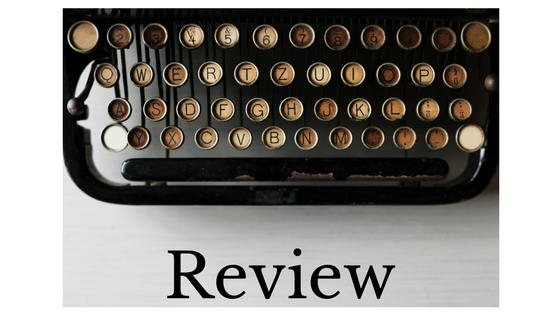

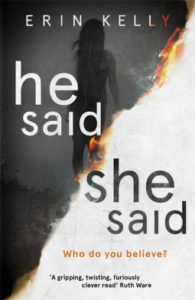 Synopsis: He Said/She Said follows Kit and Laura, alternating between their early days of dating to today, ten plus years’ married. Kit is a solar eclipse chaser and, at one of the first festivals where he invites Laura into the fold, Laura interrupts a rape. The repercussions of that rape and the interruption are continuing some fifteen years later when Kit breaks their years of hiding to travel for another eclipse, leaving Laura pregnant at home.
Synopsis: He Said/She Said follows Kit and Laura, alternating between their early days of dating to today, ten plus years’ married. Kit is a solar eclipse chaser and, at one of the first festivals where he invites Laura into the fold, Laura interrupts a rape. The repercussions of that rape and the interruption are continuing some fifteen years later when Kit breaks their years of hiding to travel for another eclipse, leaving Laura pregnant at home. Synopsis: We Are Okay follows Marin, a college student at an unnamed college in New York as she prepares to stay in the dorms over the Winter Break. As you come to learn through Marin’s flashbacks and conversations with a high-school friend/possible former sweetheart who has come to visit, Marin has no other home, having lost her grandfather shortly before she was to start college. The novel explores the reaches of grief, though as the reader comes to understand, Marin’s grief is complicated by the complicated person she discovered her grandfather to be only upon his death.
Synopsis: We Are Okay follows Marin, a college student at an unnamed college in New York as she prepares to stay in the dorms over the Winter Break. As you come to learn through Marin’s flashbacks and conversations with a high-school friend/possible former sweetheart who has come to visit, Marin has no other home, having lost her grandfather shortly before she was to start college. The novel explores the reaches of grief, though as the reader comes to understand, Marin’s grief is complicated by the complicated person she discovered her grandfather to be only upon his death.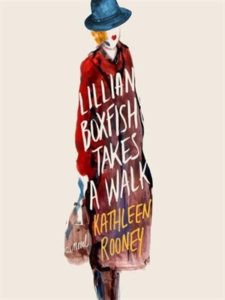 Synopsis: On the last night of 1983, Lillian Boxfish finds herself taking a walk through New York City, reminiscing the good times and the bad, remembering what she was like as the highest paid woman ad-writer of her time, as a poet, as a broken woman, and as she is now—not entirely whole, not entirely all-right, but certainly not like any old lady you know.
Synopsis: On the last night of 1983, Lillian Boxfish finds herself taking a walk through New York City, reminiscing the good times and the bad, remembering what she was like as the highest paid woman ad-writer of her time, as a poet, as a broken woman, and as she is now—not entirely whole, not entirely all-right, but certainly not like any old lady you know.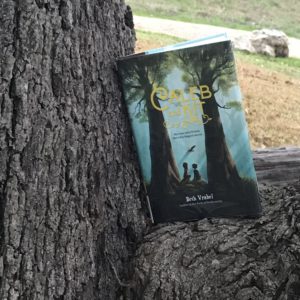 I looked up to the branches of the huge trees above me. Two long, thick trunks soared straight to the sky and then curved away from each other. I had heard once about trees that do that—live side by side but bend away to share the sun. They are buddies. They could stick close, but if they do, eventually one will struggle to tower over the other, keeping the weaker, unluckier one in the shade. Instead if they’re really friends, they’ll bend apart. I wondered if it hurt, twisting away from your friend like that.
I looked up to the branches of the huge trees above me. Two long, thick trunks soared straight to the sky and then curved away from each other. I had heard once about trees that do that—live side by side but bend away to share the sun. They are buddies. They could stick close, but if they do, eventually one will struggle to tower over the other, keeping the weaker, unluckier one in the shade. Instead if they’re really friends, they’ll bend apart. I wondered if it hurt, twisting away from your friend like that.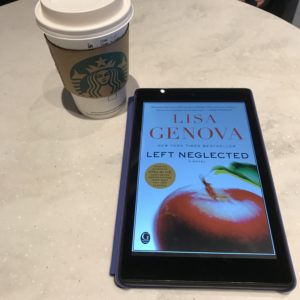 Sarah Nickerson is living life at break-neck speed, working eighty-hour work weeks and mothering three children. Until suddenly the multitasking catches up to her, causing an accident that leaves Sarah with “left neglect”—a brain injury that causes her to entirely forget her left side even exists. As Sarah trains her brain to pay attention to a part of herself she’s never had to focus deliberate energy on, she is also forced to reckon with other areas of her life left long neglected, including her relationship with her mother.
Sarah Nickerson is living life at break-neck speed, working eighty-hour work weeks and mothering three children. Until suddenly the multitasking catches up to her, causing an accident that leaves Sarah with “left neglect”—a brain injury that causes her to entirely forget her left side even exists. As Sarah trains her brain to pay attention to a part of herself she’s never had to focus deliberate energy on, she is also forced to reckon with other areas of her life left long neglected, including her relationship with her mother.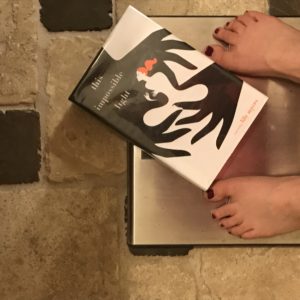 Synopsis
Synopsis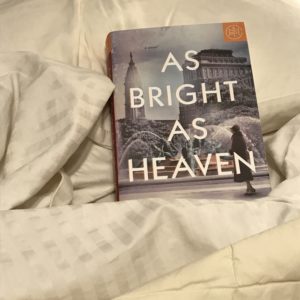 Timing
Timing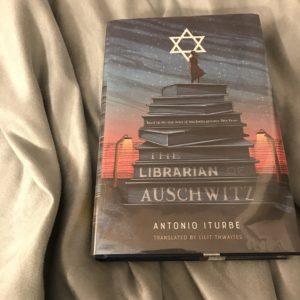 Synopsis
Synopsis
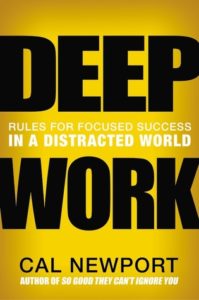 First, Newport defines “Deep Work” as “professional activities performed in a state of distraction free concentration that push your cognitive capabilities to their limit. These efforts create new value, improve your skill, and are hard to replicate.” Shallow Work is, essentially, everything else—it is the easily replicable things that suck time not brainpower but do not contribute significantly to the furtherance of any goals. What follows after this set up is a series of rules/proposals/examples that show why arranging your time and focus to provide solid blocks of time for Deep Work is vital to maximizing your working potential.
First, Newport defines “Deep Work” as “professional activities performed in a state of distraction free concentration that push your cognitive capabilities to their limit. These efforts create new value, improve your skill, and are hard to replicate.” Shallow Work is, essentially, everything else—it is the easily replicable things that suck time not brainpower but do not contribute significantly to the furtherance of any goals. What follows after this set up is a series of rules/proposals/examples that show why arranging your time and focus to provide solid blocks of time for Deep Work is vital to maximizing your working potential.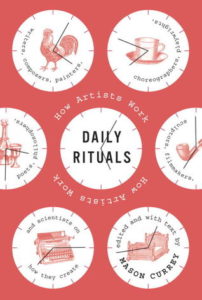 Another issue I had with this read that contributed to the running-together-problem was that there was almost no context given for who the person was that was being described. Sure, some (like Freud or Benjamin Franklin) didn’t need an introduction, but the guy who I think I figured out was a Russian choreographer definitely did. Even if I’d heard a name before, I couldn’t tell you why I knew them or what their body of work was. Not recognizing the subject of the essay contributed to the disconnect and kept me in skim-only mode.
Another issue I had with this read that contributed to the running-together-problem was that there was almost no context given for who the person was that was being described. Sure, some (like Freud or Benjamin Franklin) didn’t need an introduction, but the guy who I think I figured out was a Russian choreographer definitely did. Even if I’d heard a name before, I couldn’t tell you why I knew them or what their body of work was. Not recognizing the subject of the essay contributed to the disconnect and kept me in skim-only mode.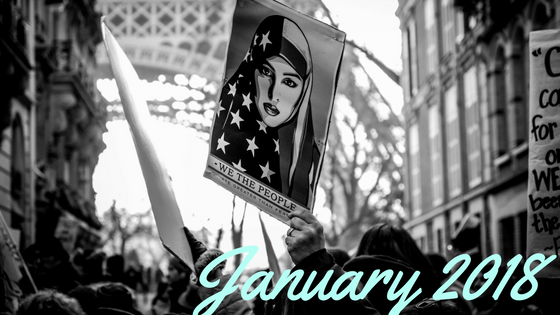
 definitely keeping. Set in the near future after a killer flu wipes out 99% of the world’s population (taking down with it all manufacturing, electricity, etc.), Station Eleven follows a traveling Shakespearean theater company and orchestra as they travel the shores of Lake Michigan going from town to town performing. Their travels are going as planned, until the arrival of a violent prophet threatens their safety and way of life. Station Eleven is beautifully written with just the right amount of creepy detail–like the plane that was prohibited from disembarking in the airport so that twenty years later, it still stands sealed full of flu victims on the far edge of the airport tarmac. Overall, the book has some dark details but is not depressing, a feat for Mandel since Station Eleven could easily have gone off the deep end of dark. Her characters are flawed people but resilient–if we’re being cliche, Station Eleven is, at its heart, not only a story of the collapse of civilization and the dangerous directions that can take, but also of the indomitable nature of the human spirit. Mandel seemed to have thought of everything that life after the collapse of technology would mean but doesn’t lecture. She’s a master of showing rather than telling. The book is relatively short–just over 300 pages–and yet the amount of story and character development she manages to fit into those pages is impressive. If you missed this one a few years ago like I did, I highly recommend you remedy your oversight and pick this one up.
definitely keeping. Set in the near future after a killer flu wipes out 99% of the world’s population (taking down with it all manufacturing, electricity, etc.), Station Eleven follows a traveling Shakespearean theater company and orchestra as they travel the shores of Lake Michigan going from town to town performing. Their travels are going as planned, until the arrival of a violent prophet threatens their safety and way of life. Station Eleven is beautifully written with just the right amount of creepy detail–like the plane that was prohibited from disembarking in the airport so that twenty years later, it still stands sealed full of flu victims on the far edge of the airport tarmac. Overall, the book has some dark details but is not depressing, a feat for Mandel since Station Eleven could easily have gone off the deep end of dark. Her characters are flawed people but resilient–if we’re being cliche, Station Eleven is, at its heart, not only a story of the collapse of civilization and the dangerous directions that can take, but also of the indomitable nature of the human spirit. Mandel seemed to have thought of everything that life after the collapse of technology would mean but doesn’t lecture. She’s a master of showing rather than telling. The book is relatively short–just over 300 pages–and yet the amount of story and character development she manages to fit into those pages is impressive. If you missed this one a few years ago like I did, I highly recommend you remedy your oversight and pick this one up. t only how he came to grips with his brother’s death but also how schizophrenia slowly started to take hold of his life. This book could easily have gone off the rails, but the tone was overall respectful. I cared deeply for Matthew and Filer handled Matthew’s refusal of his medication in a way that the reader could understand why he was making this choice that is usually portrayed as incomprehensible. ::sidebar:: There are many and valid reasons people with mental illness don’t want to take their medications, just like there are many reasons people with health conditions don’t take their doctors’ advice or take medications as prescribed. ::end sidebar:: If nothing else, The Shock of the Fall shows how grief is a universal emotion, though the experience and the struggle of it is not universally the same.
t only how he came to grips with his brother’s death but also how schizophrenia slowly started to take hold of his life. This book could easily have gone off the rails, but the tone was overall respectful. I cared deeply for Matthew and Filer handled Matthew’s refusal of his medication in a way that the reader could understand why he was making this choice that is usually portrayed as incomprehensible. ::sidebar:: There are many and valid reasons people with mental illness don’t want to take their medications, just like there are many reasons people with health conditions don’t take their doctors’ advice or take medications as prescribed. ::end sidebar:: If nothing else, The Shock of the Fall shows how grief is a universal emotion, though the experience and the struggle of it is not universally the same. north). Several of them read and mentioned this book one-after-another so I picked it up this month. It’s a narrative nonfiction story about the essentially uninvestigated, suspicious deaths of First Nation children who were sent away for school in Canada. As part of the narrative, Talaga provides background on the racist residential school system designed to destroy indigenous families and cultures (it was literally a model for apartheid South Africa) as well as revealing the rampant racism still prevalent against indigenous peoples in Canada today (Et tu, Canada?).
north). Several of them read and mentioned this book one-after-another so I picked it up this month. It’s a narrative nonfiction story about the essentially uninvestigated, suspicious deaths of First Nation children who were sent away for school in Canada. As part of the narrative, Talaga provides background on the racist residential school system designed to destroy indigenous families and cultures (it was literally a model for apartheid South Africa) as well as revealing the rampant racism still prevalent against indigenous peoples in Canada today (Et tu, Canada?).